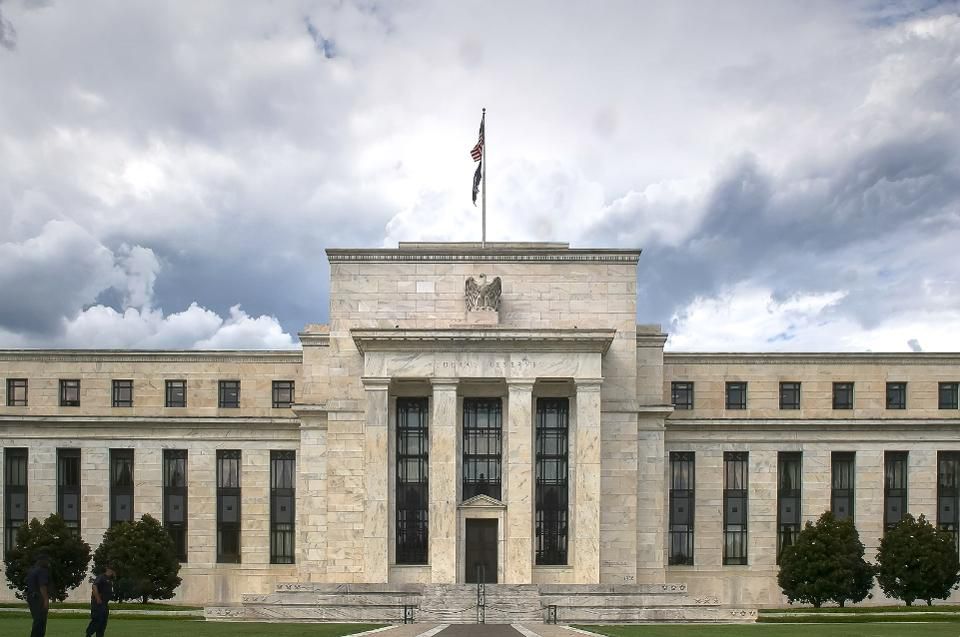
How many Americans today believe they have a firm grasp of what constitutes lawful money? Most Americans have never spent a unit of paper money that is not a Federal Reserve Note (FRN), issued by one of the Federal Reserve banks. But is a Federal Reserve Note actually money? It is printed by the U.S. Treasury, but does that make it money?
"[I]s a Federal Reserve Note actually money? It is printed by the U.S. Treasury, but does that make it money?"
The Federal Reserve actually buys the printed notes from the United States Treasury Bureau of Engraving and Printing for about $0.04 per note regardless of denomination. Any actual value of the note is not inherent, but rather predicated on its issuance against a debt, as when a bank customer takes out a loan and withdraws the cash. In reality, FRNs are debt notes; IOUs. They are “notes,” which are defined in law as “A written statement by an individual to pay a sum of money to another individual, or the bearer of the note at a specified period in time.” Cornell Law School’s Wex Dictionary states that a “note” is “the same as a promissory note.”
The first authorized “note” in U.S. history was the United States Note, issued as fiat currency against the faith and credit of the United States in the wake of the Civil War. The United States Note was later issued during the Kennedy administration in 1963, pursuant to the original 1868 act which required the Secretary of the Treasury to maintain the overall amount of U.S. Notes outstanding at a fixed level. This requirement had been ignored since the creation of the separate Federal Reserve Note, but was implemented by the Kennedy administration to correct what it saw as a short supply of FRNs. Actual lawful United States currency was never called a “note,” which has a specific legal meaning, but rather a “certificate” (representing fixed quantity of gold or silver).
Writing at Investopedia, Will Kenton describes the difference between tender and lawful money:
Lawful money is any form of currency issued by the United States Treasury and not the Federal Reserve System. It includes gold and silver coins, Treasury notes, and Treasury bonds. Lawful money stands in contrast to fiat money, in which the government assigns value although it has no intrinsic value of its own and is not backed by reserves. Fiat money includes legal tender such as paper money, checks, drafts, and banknotes. Lawful money is also known as "specie," which means "in actual form."
In defining Federal Reserve notes, the Federal Reserve Act of 1913 stated that they
shall be obligations of the United States and shall be receivable by all national and member banks and Federal reserve banks and for all taxes, customs, and other public dues. They shall be redeemed in lawful money on demand at the Treasury Department of the United States, in the city of Washington, District of Columbia, or at any Federal Reserve bank [emphasis added].
So why would they be redeemable in “lawful money” if they are lawful money? The short answer is that they are not, as noted above, lawful money, but rather instruments of legal tender.
In 1933, FDR terminated most of our lawful money (by value) when he withdrew all circulating gold specie. The 73rd Congress, on June 5, 6, 1933, converted the FRNs authorized by the Federal Reserve Act, along with “all coins and currencies of the United States,” into “legal tender” via a joint resolution (HJR-192) that purported to amend the Agricultural Adjustment Act of 1933 (itself later found unconstitutional on separate grounds). Prior to the elimination of lawful gold and gold-backed money under Franklin Delano Roosevelt, FRNs carried on their face a disclaimer defining them as had the Federal Reserve Act of 1913: “THIS NOTE IS LEGAL TENDER FOR ALL DEBTS, PUBLIC AND PRIVATE, AND IS REDEEMABLE IN LAWFUL MONEY AT THE UNITED STATES TREASURY, OR AT ANY FEDERAL RESERVE BANK”
A Federal Reserve Note is no more lawful money than a check is lawful money, except that FRNs are required to be accepted for the discharge of debt by the federal government.
Subsequently, following the elimination of circulating gold-based “lawful money” (gold coins and certificates) the disclaimer was truncated to its current form: “THIS NOTE IS LEGAL TENDER FOR ALL DEBTS PUBLIC AND PRIVATE,” indicating clearly that FRNs were no longer required to be redeemable in lawful money.
No lesser authority than the United States Treasury website states in its Facts and Questions under the heading “legal tender”:
Federal Reserve notes are not redeemable in gold, silver or any other commodity, and receive no backing by anything. Redeemable notes into gold ended in 1933 and silver in 1968. The notes have no value for themselves, but for what they will buy. In another sense, because they are legal tender, Federal Reserve notes are “backed” by all the goods and services in the economy.
So what happened to the “lawful money”?
According to Gresham’s law, articulated in 1860 by Scottish economist Henry Dunning Macleod, and named for Tudor-era British financier Sir Thomas Gresham,
any circulating currency consisting of both "good" and "bad" money (both forms required to be accepted at equal value under legal tender law) quickly becomes dominated by the "bad" money. This is because people spending money will hand over the "bad" coins rather than the "good" ones, keeping the "good" ones for themselves. Legal tender laws act as a form of price control. In such a case, the intrinsically less valuable money is preferred in exchange, because people prefer to save the intrinsically more valuable money.
Because American lawful money was fully backed by precious metal specie, it was the definition of “good” money. The lawful dollar is specifically defined by the Coinage Act of 1792 as being equal to 371 4⁄16 grain (24.1 g) pure or 416 grain (27.0 g) standard silver, with “standard silver” being defined as 1485 parts pure silver to 179 parts copper alloy; and was modified by subsequent acts of Congress to set the relative value of gold coin to silver.
What, then, makes FRNs “bad” money?
As we have seen, FRNs are unbacked tender; a form of fiat currency. Beyond that, they are products of the dubious “fractional reserve” system created by the European central banks, the Bank of Amsterdam generally being credited as the first fractional reserve issuer. The fractional reserve system is one whereby a bank taking on deposits (originally of coin or bullion) is allowed to issue notes, as issued against an interest-bearing loan, predicated upon a fractional percentage of the value of a deposit received from a depositor.
The rub is that the depositor may withdraw any portion or indeed all of his deposit, as allowed by banking rules[1] without affecting the “loan.” The bank is not “loaning” the depositor’s money. To the contrary, the bank is authorized by a recognized (typically governmental) authority to issue an IOU in the form of legal paper notes, such as Federal Reserve Notes, predicated on a percentage of the net deposits at the time of the loan issuance. Moreover, the loaned funds may then be deposited and counted toward that bank’s total net deposits for the purposes of issuance of additional loans. Because no portion of the deposits upon which the loan is allegedly based is required to be set aside, except for the fractional reserve amount, the loan, along with the legal tender that represents it, is actually spun out of thin air.
The inflationary pressure such a system for issuance of legal tender imposes on the economy should be obvious. Nevertheless, let us consider an example in microcosm.
If a depositor “A” makes the first deposit to a given bank in the amount of $100, that represents the bank’s original net deposits. A fractional rule that requires 20% reserve would allow the bank to lend up to $80 (80% of the depositor’s $100) against that deposit. It does not, however, actually loan the deposited tender; the depositor’s money is available to him at any time and may be withdrawn without any requirement for removal from circulation of the $80 in legal tender created for the loan. If borrower “B” borrows that $80 and then deposits it, he becomes depositor “B” and the bank now has $180 in net deposits (depositor B’s $80 and depositor A’s original $100), upon which it may loan an additional $144 to someone else. Thus, in two simple transactions, an actual $100 of wealth represented by depositor A’s original deposit of $100 has turned into $324 in potentially circulating legal tender, and the amount potentially available for lending exponentially expands as additional loaned tender based on those expanding deposits is itself loaned and redeposited.
The Federal Reserve Bank of Atlanta unabashedly confirms this process on its website, its description of the fractional reserve process stating that “Banks take in a deposit, they let out a loan, the loan becomes another deposit, which becomes another loan, and so on and so forth.” Now this represents the very definition of monetary inflation through adulteration, via the issuance of multiple notes carrying a face value representing a single fixed-value deposit. That is to say, notes may be issued whose face value amounts to many multiples of the value of the actual deposited wealth backing them. Backed currency—lawful money—cannot devalue in this manner.
Alas, the lawful backed currency that defined our monetary system prior to 1913’s Federal Reserve Act was decimated and replaced in two short decades by the “bad” money described by Gresham’s law, precisely as Macleod had theorized. Positive value backed currency was converted to bank-issued IOUs, with the issuer then being owed repayment under the force and effect of federal law for which the requisite sum of wealth potentially did not exist. This monetary inflation, many believe, was the primary cause of the inflationary pressure that caused the stock bubble of the 1920s and the ensuing financial instability and depression. As individuals and even the government defaulted on unrepayable loans, the central banks demanded real property (in the form of foreclosures) or, in the case of the government, gold reserves to settle the delinquent loans, thereby converting their all-but-valueless paper into real estate and precious metals.
It should be known that despite its name, the Federal Reserve is a private entity, not part of the federal government. It was created on the European central reserve bank model out of private member banks already in existence. Federal Reserve banks operate for profit, unlike the constitutionally authorized issuer of currency, the United States Treasury. The fractional reserve system upon which it and its member banks operate insures an ever-expanding supply of notes and/or credit, regardless of the value of the wealth underlying the “full faith and credit of the United States” upon which it is ostensibly predicated. Expansion of notes or credit in excess of expansion of actual underlying wealth is, by definition, inflationary, just as offering a new issue of shares in a company of fixed value devalues those shares already held by investors. Moreover, when more debt is issued than resources exist to repay, repayment of that debt becomes mathematically impossible, especially when the only medium of monetary exchange is the inflationary note or the inflationary credit system it represents. The only available means to create sufficient notes to continue to service exiting debt is to take out additional, ever-expanding debt.
Notes
[1] Potentially limited, for example, by such rules as apply to withdrawal of certificates of deposit, whereby a penalty applies to early withdrawal.

